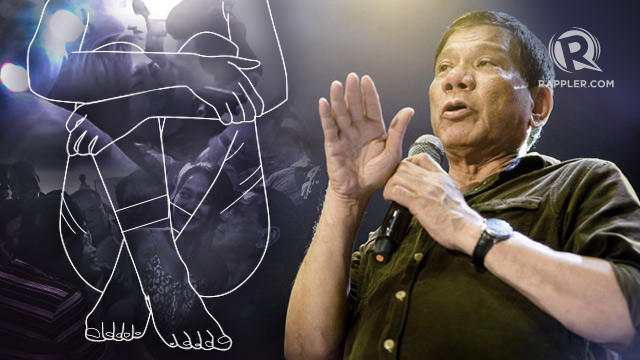
There are two contending stories about what occurred in Kidapawan last April 1, 2016.
The first is that farmers and indigenous people, starving from the effects of El Niño, organized themselves and went to Kidapawan to protest and demand that their needs be met by a cruel, incompetent and insensitive government.
The El Niño phenomenon started in October 2015. Government has been its usual slow and bureaucratic mess in giving out life-saving food support. The situation is dire and there are reports of farmers committing suicide due to hunger. In this telling, the blame is on a large number of government people from President Aquino (the “US-Aquino regime” in some accounts), to the National Food Authority that should release the rice, to the governor of North Cotabato, Emmylou Taliño-Mendoza and the mayor of Kidapawan, Joseph Evangelista.
None of these people even bothered to talk to the farmers. Instead, after three days of farmers barricading the Davao-Cotabato Highway and the failure of what were insulting and cursory negotiations, the police fired upon the peaceful assembly, causing death and injury because the business people complained about the economic costs.
Clearly, as one of the farmer leaders stated, what was 3 days of profits to the months of misery and number of lives at stake?
The other story is that the farmers were manipulated by front organizations of the Communist Party of the Philippines. The rally began a day after the New People's Army's (NPA) founding anniversary. Participants were told that rice was to be distributed in Kidapawan without informing them that they were going into a protest action.
Backed by the NPA and relying on confrontational tactics, the organizers instigated the clash with the police in order to put government in a bad light and create a situation where its favored allies (presidential candidate and Davao Mayor Rodrigo Duterte, Manny Piñol and his brother) as well as the Bayan Muna bloc were “pre-positioned” so to speak, to take advantage of the inevitable outcome of a demonstration never meant to be peaceful and negotiations where one party was not acting in good faith. It is also claimed that the New People's Army had operatives in the protest. This story points to the fact that two policemen were critically injured during the fray.
The feed on my social media account is rife with analysis, counter-analysis, documentation of the various themes in these two accounts. My head spins.
Moral outrage
The only common thing about these two narratives is the high level of moral outrage in them. Both are aghast that people are using the starving farmers for their political ends. Both bewail the senseless loss of lives, except one set seems to mention the farmers more than the policemen and another, the policemen more than the farmers.
“Bigas!” (Rice!), the call and need of the farmers has now been framed around the hashtags “#bigashindibala” (rice not bullets) or “#bigashindipropaganda” (rice not propaganda).
The other common theme is that anyone who makes any statement at all about this is likely to be judged as to whether they conform to the narratives both in terms of what they say but also in terms of whether they have a “right” to the narrative.

This is true especially for those who dare to cross the line between the two narratives.
Vice presidential candidate and administration bet Leni Robredo, for example called for the immediate relief of those who fired into the crowd while calling for a thorough investigation. She also asked that immediate solutions be found to bring food to the farmers in need. She was condemned for this because, being an administration bet, she had no right to be among the “good” in the “#bigashindibala” narrative and was therefore accused of hypocrisy for echoing themes this group would have found acceptable if it came from one of them (that is, those who oppose Aquino, the Liberal Party, and LP bets Mar Roxas and Leni Robredo).
A friend of mine and I condemned the killings but also asked why there were young children at the rally and wondered whether the organizers should have ensured that children were not in the line of fire. Firestorm! In this situation where the stories are about absolute good and absolute evil, any attempt to treat one side like ordinary persons who may have made mistakes (instead of treating them as either heroes or evil-doers) are met with cyberbullying and name-calling.
The reactions indeed to those of us who straddled the middle (or at least were perceived to straddle the middle) were informative. We were immediately castigated as traitorous and coopted. For one thing, the owners of the narrative “cops bad, demonstrators good” want to throw us out of movements we have served for most of our adult lives. To these women (one of whom is so young I have been an activist longer than she has been a human being), we no longer deserve the terms we use to describe ourselves, namely, feminists and socialists.
As I write this, two days after the incident, in the rising tide of accusations and counter-accusations, this demonization of the differing other has taken a hysterical turn.
Commentaries include words like “you in your comfortable houses,” or “you who hang out in Starbucks,” which I suppose contrasts the “you” that is being castigated with the hungry and suffering farmer. (To be honest I prefer my coffee at home so I did not feel referred to by the Starbucks comment. I did feel badly about writing this at my comfortable desk. I imagined the writer, who accused her opposition of being in a comfortable house, to be sitting in the blood-stained dirt of the Kidapawan highway while drinking coffee with that other commenter who doesn't think Starbucks is an appropriate space for activists.)
My family says at this point that I am asking for more grief by even touching this topic yet again. Especially as I said I had had enough and promised to engage no further. I always say this to my counselees who have to deal with such moral outrage: when the moral absolutes are being thrown about like knives flying in all directions, duck!
Assigning blame, claiming glory
But I am afraid that the the other commonality of these two narratives – “the farmers are being used” – is in fact happening.
I am afraid that so much energy is being spent on assigning blame and claiming glory that I wonder how we can actually begin to solve the problem now, and continue to do so when the news cycle has moved on to yet another bombastic issue. There is so much more to be said about both the dangers and the possible solutions. I wonder also how we can find justice for the farmers who were killed and hurt, as well as the policemen.
It is time, I think, for more people to weigh in and to have all who are riding their high horses come down. I believe more views are sorely needed. It is time when other stakeholders should be heard. Given the stakes now, this means the entire nation.
I put my trust in the general public, you dear reader. It's time to hope that a sensible majority will stop making this about the elections and candidates and power blocs. It is time to make it about finding solutions and feeding those farmers. It's time to make it about the future of a democratic country were protest serves its proper function, differences can be treated with respect, and peaceful protest is the norm.
And so I will also take a page from the literature on peace studies: when two groups with completely different stories collide, call in other stakeholders. I take the bold risk of being again in the middle and saying neither of these stories could possibly be all wrong, neither possibly all correct. None of these two accounts will lead us to peace.
It is you, dear reader, who should weigh in now. My fervent hope is that the broad and often unheard public can talk some sense into us. At least the peace literature says this is a possibility. Please think about this impasse and tell the activists and the government what we should do and think.
Thought piece? Yes. Here's one where you, the public, get to do the thinking. – Rappler.com
 There are certain matters that are, and should be, beyond spin. Violence by government agents against civilians, for one.
There are certain matters that are, and should be, beyond spin. Violence by government agents against civilians, for one.

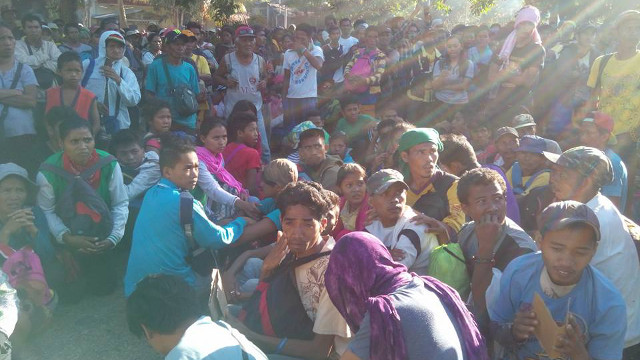
 When I listened to the presidential candidates express their views on climate change and renewable energy during the
When I listened to the presidential candidates express their views on climate change and renewable energy during the 



 When people died because of Super Typhoon Yolanda, they were blamed for not evacuating early. When farmers were killed in Kidapawan, they were blamed for protesting to begin with.
When people died because of Super Typhoon Yolanda, they were blamed for not evacuating early. When farmers were killed in Kidapawan, they were blamed for protesting to begin with.
 This is how they silence a woman: first they tell you to shut up — because you are a woman and have nothing important to say.
This is how they silence a woman: first they tell you to shut up — because you are a woman and have nothing important to say.
 By taking a leaf from a chapter on American partisan politics, we understand that presidential campaigns in the United States are like teasers of the administration that will govern once elected by their Electoral College system.
By taking a leaf from a chapter on American partisan politics, we understand that presidential campaigns in the United States are like teasers of the administration that will govern once elected by their Electoral College system.




 The May 9, 2016 Philippine elections and the November 2016 US elections will not only be a test of candidates, but a test of our respective political systems.
The May 9, 2016 Philippine elections and the November 2016 US elections will not only be a test of candidates, but a test of our respective political systems. 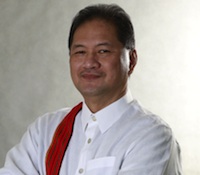 Last Saturday, April 9, with the release of the minute one-page resolution denying with finality the motions for reconsideration seeking to reverse its earlier ruling declaring Senator Grace Poe qualified to run for president in the May 9, 2016 elections, all obstacles to Poe’s candidacy for president are swept aside and she is now completely free to present herself before the people in the final month of the election campaign. The Court made it very clear that no new appeal or motion for reconsideration will be considered. (READ:
Last Saturday, April 9, with the release of the minute one-page resolution denying with finality the motions for reconsideration seeking to reverse its earlier ruling declaring Senator Grace Poe qualified to run for president in the May 9, 2016 elections, all obstacles to Poe’s candidacy for president are swept aside and she is now completely free to present herself before the people in the final month of the election campaign. The Court made it very clear that no new appeal or motion for reconsideration will be considered. (READ: 


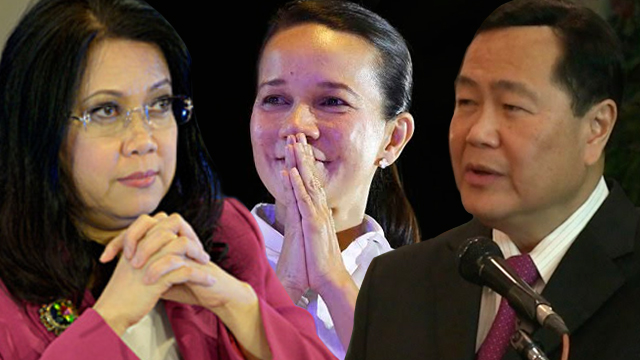
 The global perspective on fossil fuels, one of the primary culprits of
The global perspective on fossil fuels, one of the primary culprits of 


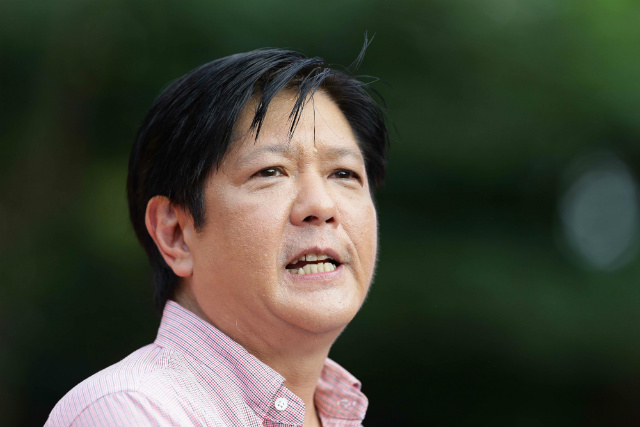
 The answer is the same as many other vexing problems, it depends.
The answer is the same as many other vexing problems, it depends.





 In short, it was not ostentatious by any stretch. It pales in comparison to Janet Napoles’s daughter’s alleged property in Los Angeles, California, specifically Unit 37I at the Ritz-Carlton Residences that’s worth almost $2 million. It was nothing like that.
In short, it was not ostentatious by any stretch. It pales in comparison to Janet Napoles’s daughter’s alleged property in Los Angeles, California, specifically Unit 37I at the Ritz-Carlton Residences that’s worth almost $2 million. It was nothing like that.




